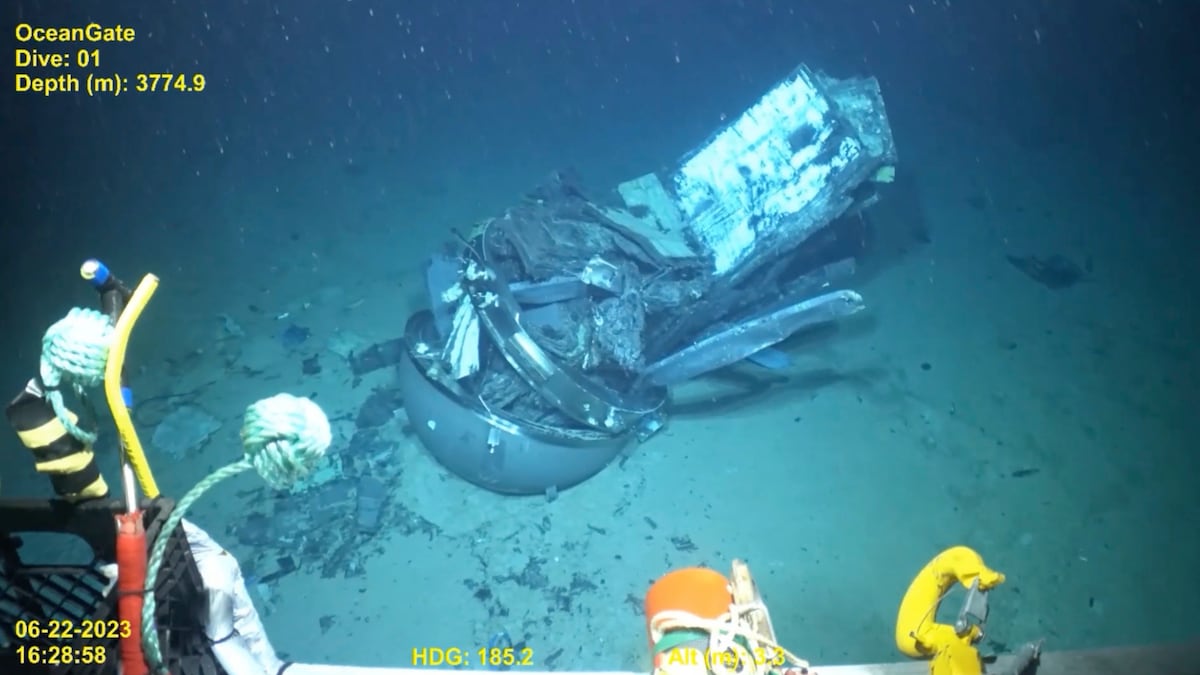Titan sub disaster caused by weak safety, oversight, Coast Guard says

PORTLAND, Maine — The 2023 Titan submersible disaster could have been prevented, the U.S. Coast Guard said in a report Tuesday, but OceanGate CEO Stockton Rush ignored safety warnings, design flaws and crucial oversight that may have resulted in criminal charges had he survived.
Rush and four passengers were killed when Titan suffered a catastrophic implosion as it descended to the wreck of the Titanic, sparking a dayslong search in the North Atlantic off Canada that grabbed international headlines. The Coast Guard convened its highest level of investigation in the aftermath, and the disaster has led to lawsuits and calls for tighter regulation of the developing private deep sea expedition industry.
The Titan was owned by OceanGate, a private company based in Washington state. The Coast Guard report found the company’s safety procedures were “critically flawed” and cited “glaring disparities” between safety protocols and actual practices.
Preventing the next Titan disaster
Jason Neubauer, with the Marine Board of Investigation, said that the findings will help prevent future tragedies.
“There is a need for stronger oversight and clear options for operators who are exploring new concepts outside of the existing regulatory framework,” he said in a statement.
OceanGate suspended operations in July 2023. A spokesperson for OceanGate, Christian Hammond, said the company has been wound down and was fully cooperating with the investigation, and offered condolences to the families of those who died and everyone affected.
Coast Guard report describes ‘red flags’ at OceanGate
Investigators repeatedly point to OceanGate’s culture of downplaying, ignoring and even falsifying key safety information to improve its reputation and evade scrutiny from regulators. OceanGate ignored “red flags” and had a “toxic workplace culture,” while its mission was hindered by lack of domestic and international framework for submersible operations, the report says.
Numerous OceanGate employees have come forward in the two years since the implosion to support those claims. The report says firings of senior staff members and the looming threat of being fired were used to dissuade employees and contractors from expressing safety concerns.
“By strategically creating and exploiting regulatory confusion and oversight challenges, OceanGate was ultimately able to operate TITAN completely outside of the established deep-sea protocols,” the report found.
The Marine Board concluded that Rush “exhibited negligence” which contributed to the deaths of four people. Had Rush not died in the implosion, the case would have been handed off to the U.S. Department of Justice and he may have been subject to criminal charges, the board said.
The report also states that OceanGate reclassified its submersible passengers as “mission specialists” to bypass small passenger vessel regulations and allow submersibles to be designated as oceanic research vessels. Former mission specialists and OceanGate employees said their participation was “purely for a ride in the submersible, not for scientific research,” the report states.
Titan’s inadequacies
Investigators found the submersible’s design, certification, maintenance and inspection process were all inadequate. Coast Guard officials noted at the start of last year’s hearing that the submersible had not been independently reviewed, as is standard practice.
The vessel’s carbon fiber hull design and construction introduced flaws that “weakened the overall structural integrity” of its hull, the report stated.
Mounting financial pressures in 2023 led to a decision by OceanGate to store the Titan submersible outdoors over the Canadian winter, where its hull was exposed to temperature fluctuations that compromised the integrity of the vessel, the report said.
The report also contends that Rush submitted a fraudulent sea service letter signed by OceanGate’s chief operations officer to the Coast Guard’s National Maritime Center to obtain his credentials. In the letter, Rush claimed past service as a crew member on Titan and misrepresented the size of the vessel, when in fact it had never been registered or admeasured.
The Marine Board said one challenge of the investigation was that “significant amounts” of video footage evidence that had been captured by witnesses was not subject to its subpoena authority because the witnesses weren’t U.S. citizens.
The victims of the Titan disaster
In addition to Rush, the implosion killed French explorer Paul-Henri Nargeolet, British adventurer Hamish Harding and two members of a prominent Pakistani family, Shahzada Dawood and his son Suleman Dawood.
The family of Nargeolet, a veteran French undersea explorer known as “Mr. Titanic,” filed a more than $50 million lawsuit last year that said the crew experienced “terror and mental anguish” before the disaster. The lawsuit accused OceanGate of gross negligence.
The Titan’s final dive
Titan had been making voyages to the Titanic site since 2021. The Titan’s final dive came on June 18, 2023, a Sunday morning when the submersible would lose contact with its support vessel about two hours later. The submersible was reported overdue that afternoon, and ships, planes and equipment were rushed to the scene about 435 miles south of St. John’s, Newfoundland.
Wreckage of the Titan would subsequently be found on the ocean floor about 330 yards off the bow of the Titanic, Coast Guard officials said.
Associated Press writers Kimberlee Kruesi in Providence, Rhode Island, and Leah Willingham in Boston contributed to this report.






